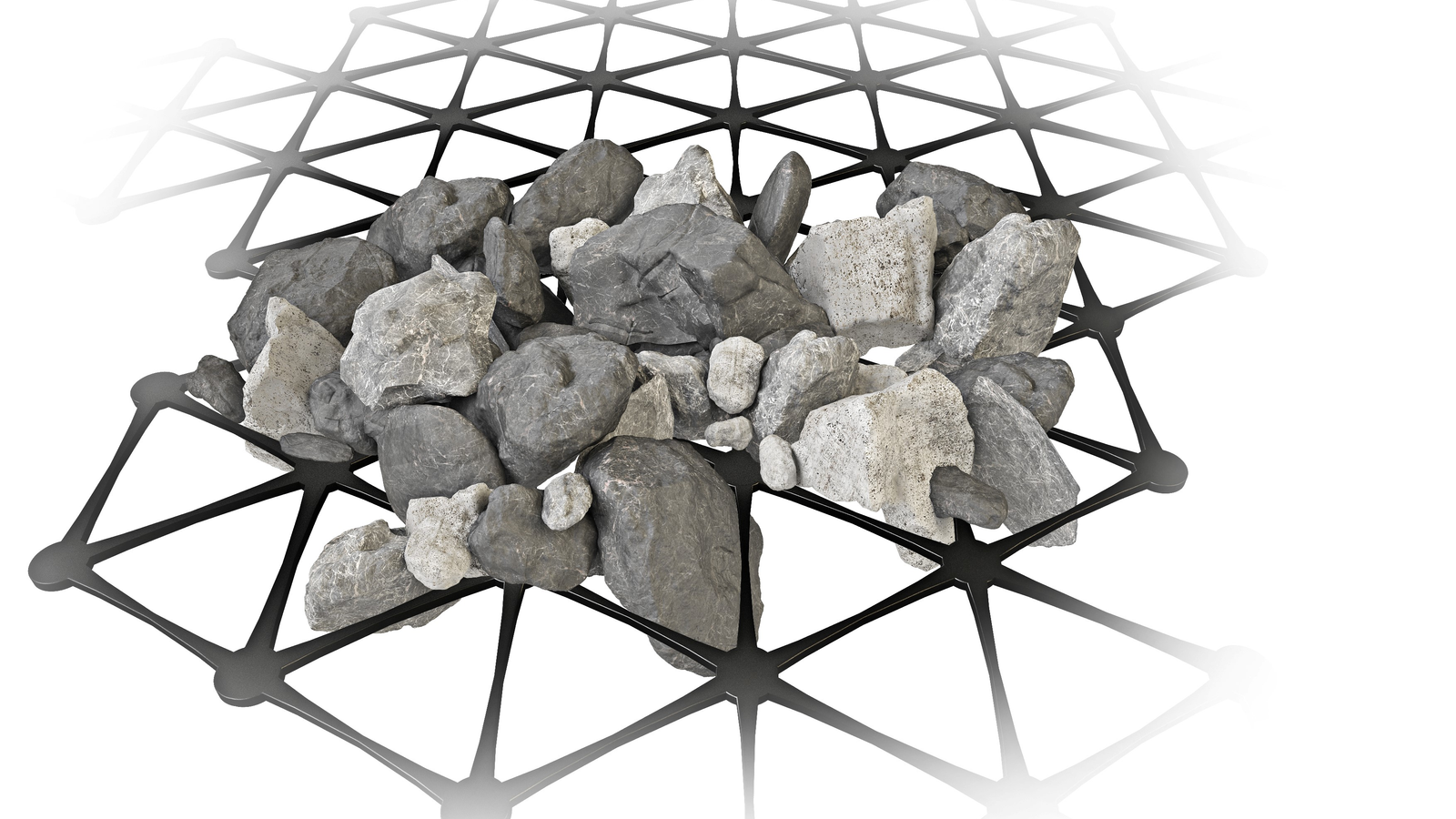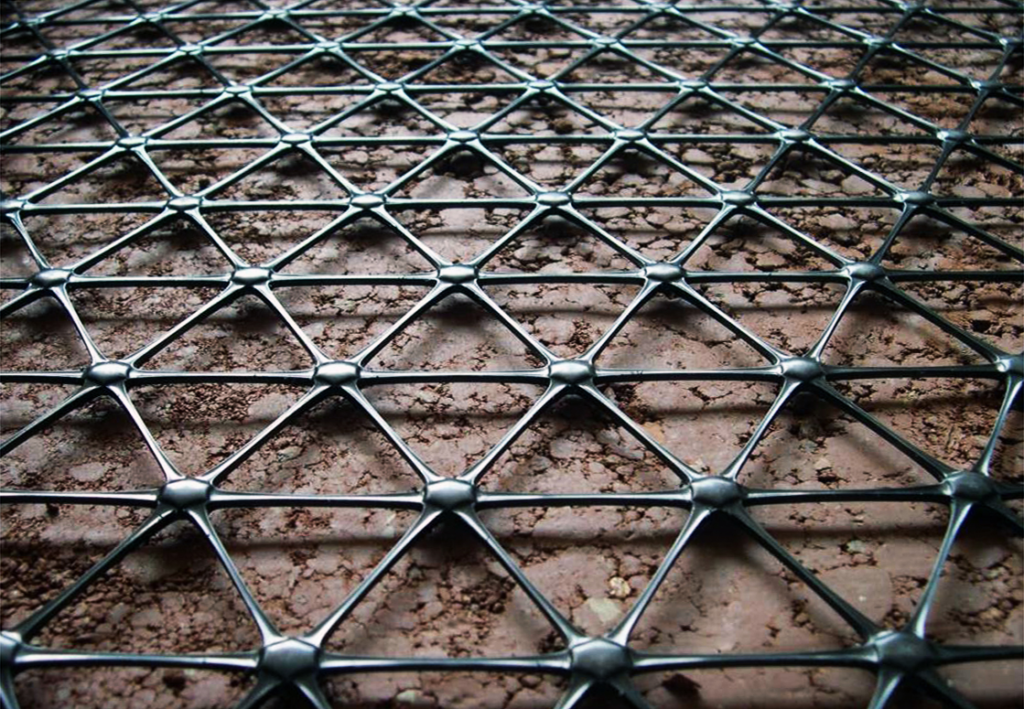What is Triaxial geogrid ?
Triaxial geogrid is made of synthetic materials such as high-strength polyester (PET) and polypropylene (PP). It is a geosynthetic material made by a proprietary process through vertical and horizontal interweaving and three-dimensional weaving structure. Its main function is to strengthen the foundation, roads and other infrastructure by providing enhanced mechanical properties of the soil and improving soil stability.

Main performance indicators of triaxial geogrids
- Tensile strength; tensile strength is one of the important performance indicators of geogrids, which directly determines the load that the grid can withstand during the reinforcement process. Generally, the tensile strength of triaxial geogrids ranges from 20kN to 80kN, which means that it can effectively enhance the bearing capacity of road foundations within a certain range.
- Tensile modulus; tensile modulus represents the ratio of stress to strain generated by the grid during the stretching process. The higher the tensile modulus, the stronger the rigidity of the grid, which can effectively limit the deformation of the soil and maintain the stability of the road foundation.
- Water permeability; the ability of geogrids to promote water penetration during use. Appropriate water permeability helps to avoid damage to the road foundation caused by accumulated water while maintaining the stability of the soil.
- Friction coefficient; an important factor that determines the interaction between triaxial geogrids and soil. A high friction coefficient can improve the bonding strength between the grid and the soil, thereby enhancing its reinforcement effect.
Application of triaxial geogrids in road foundation reinforcement
- Improved foundation bearing capacity; triaxial geogrids can effectively improve the bearing capacity of road foundations. When road construction needs to pass through areas of uneven settlement, the use of triaxial geogrids can significantly improve its bearing capacity by enhancing the stability of the foundation.
- Preventing roadbed settlement; roadbed settlement is a common problem when building roads on weak foundations. Triaxial geogrids can effectively prevent the occurrence of foundation settlement by limiting the deformation of the soil, especially in high water level areas, and can better disperse the load and reduce the risk of settlement.
- Improving road surface crack resistance; During the use of roads, cracks often appear on the road surface due to factors such as load and climate change. Triaxial geogrids can effectively improve the crack resistance of the road surface by providing enhanced tensile properties, reduce the occurrence of cracks, and extend the service life of the road.
- Improving anti-slip ability; During road construction, especially in areas with large slopes, preventing landslides and sliding is a key issue. The triaxial geogrid can effectively prevent the slip of the foundation and improve the stability of the road through its strong tensile strength and friction.

Application case analysis of triaxial geogrids
Case 1: Highway roadbed reinforcement
During the construction of the highway, after many geological surveys, it was found that the soil in the area where the road section passed was soft and the water level was high. In order to prevent settlement and roadbed deformation during road construction, the project party decided to use triaxial geogrids for reinforcement. After three months of construction, the roadbed reinforcement effect was good, greatly improving the stability and bearing capacity of the road, and the construction party did not encounter serious settlement problems during subsequent use.

Case 2: Urban road foundation pit reinforcement
During the construction of urban roads, the high groundwater level and soft soil caused the foundation pit to become unstable. The construction party decided to lay triaxial geogrids on the foundation pit wall, which effectively prevented the collapse of the foundation pit and the sliding of the surrounding soil by strengthening the stability of the soil. In the end, the project was successfully completed and received high praise from customers.

Conclusion
Triaxial geogrid is a new type of foundation reinforcement material with significant advantages in road construction. By providing high strength, low deformation and good friction performance, it can effectively improve the stability of the road foundation, prevent settlement and cracks, and ensure the long-term performance of the road. With the continuous development of technology, the application prospects of triaxial geogrid will be broader and it will become one of the indispensable and important materials in road construction. If you need more detailed product parameters or customized solutions, please contact us for technical support.






